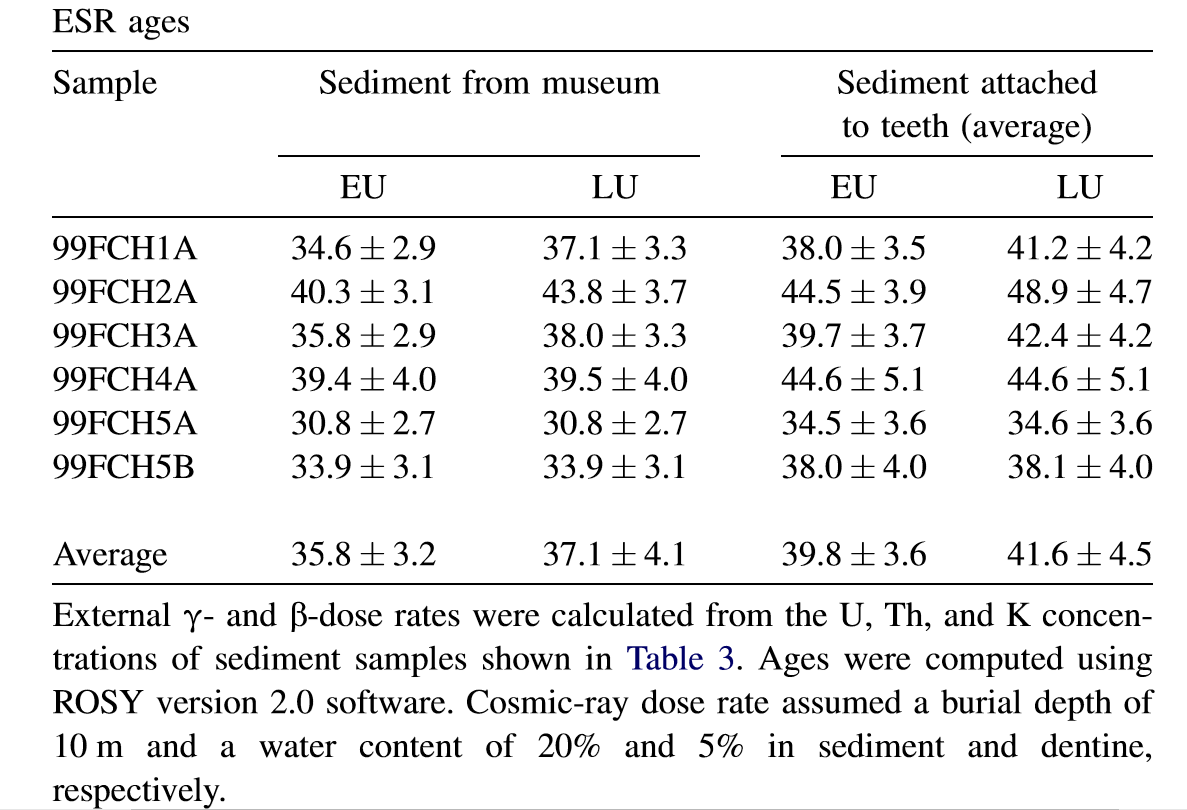Chronology
It proved quite challenging to date Fontechevade. In the end, we were able to find material from the old excavations to date. We radiocarbon dated five unidentified mammal bones from a box marked as containing material from "near" Homo II. Two of these samples provided radiocarbon ages of approximately 33000 years old. Another sample provided an infinite age. In addition, again from the old collections, we used ESR to date five bovine teeth from the upper bed E at an elevation that should pre-date Homo I and date Homo II. These samples produced an age of approximately 39000 years old. Thus Homo I likely dates to a period after the replacement of archaics by moderns, and Homo II dates to a period when both archaics and moderns were present in Europe.
For more information, see Chase et al. 2007 in the Journal of Human Evolution.
